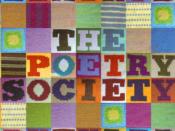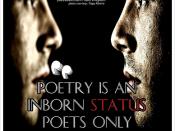The poem "A Bird Came Down the Walk" reminds us of a nursery rhyme because of its rhyme scheme and rhythm. The poem starts with "A bird came down the walk. He did not know I saw. He bit the angleworm in halves and ate the fellow raw." The rhythm makes the poem very easy to read. The sentence or clause always ends in the end of the line with a punctuation sign and never get carried over to the next one, so that the poem is very easy to follow. With the simplicity of the plot and a sense of humor, as in calling the angleworm a "fellow", there is certain playfulness and innocence in the poem, as if one was talking to a child. The poem is reminiscent of a nursery rhyme about an old jolly farmer going about his business.
The imagery in the poem, aside from being simple, is very naturalistic.
The reader can easily imagine a bird that "hopped sideways to the wall." There are no thoughts or feelings in this poem; only actions are described. Emily Dickinson celebrates trivial things, the simple but beautiful order of nature. She emphasizes this simplicity by the playful and guileless rhythm of the poem.
After the character gives the bird a crumb, the rhythm breaks and slows down, and the reader can almost feel the smoothness of the bird gliding through the air. There are no punctuation signs at the ends of the two sentences which lets them "hang in the air." The sentence carried over to the next stanza and the repetition of "and" in the beginnings of two lines in a row, which is reminiscent of romantic poems, help achieve the sense of flying.
"And he rolled his feathers
And rowed him softer home...


